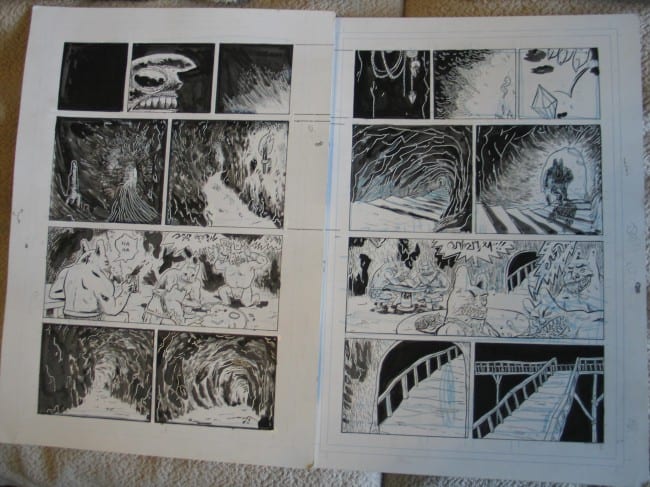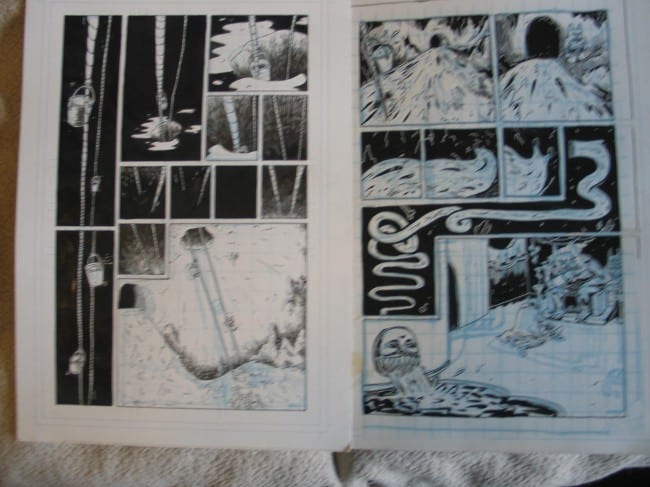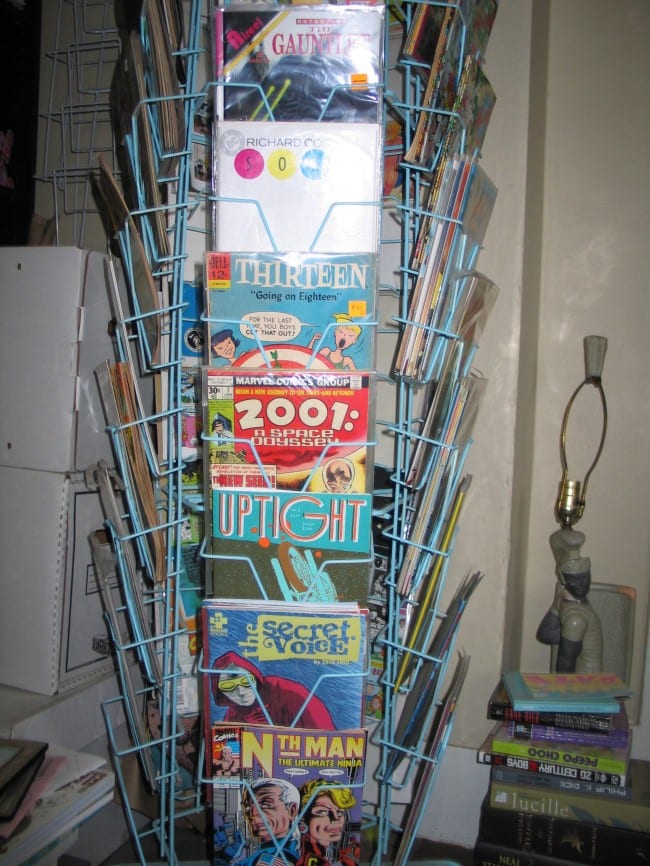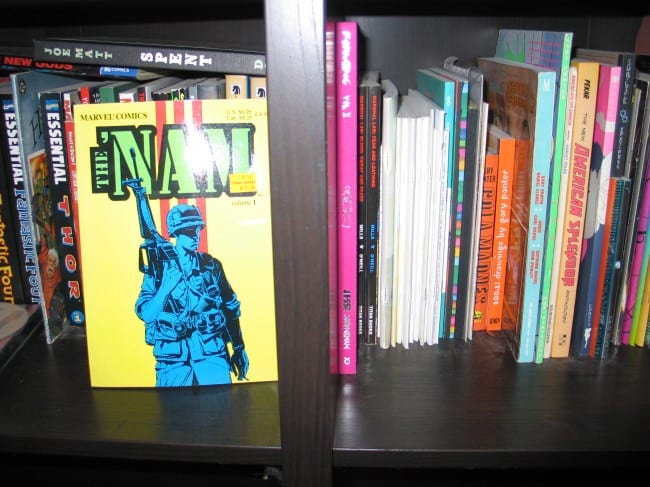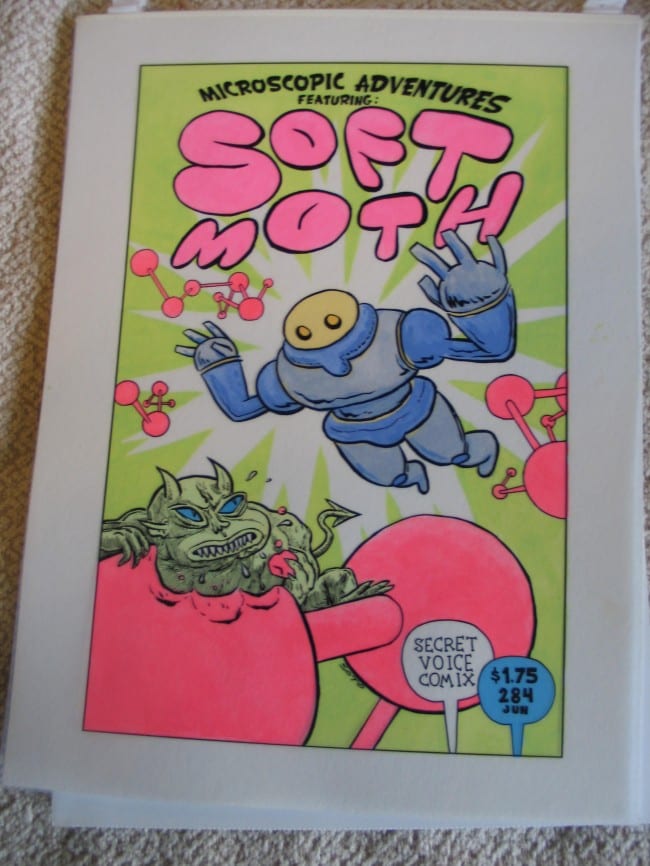Study Group is worth a look.
When Study Group launched in January, I was preparing for my tour and missed the announcement. A couple weeks later while I was on the road, I got a call from Dash Shaw. He asked if I'd seen the new Study Group site. I had not. It's worth checking out, he said. He really liked the design and the way the comics were updated. "It's clear and easy to read and follow different strips."
So I took a look. And whaddaya know? It feels like something new and fresh. I've seen webcomics and seen "anthology" webcomic sites but this felt like - read like - something I had not encountered before.
Webcomics have been the red headed stepchild of comics for the last few years. Despite the successes of some, most webcomics are still off most comic book fans' radar. Wait, that should read "my radar." This may be my own failing, but I think there is still a divide between webcomics and print comics.
Personally, it wasn't until about 2008 that I even began to think of webcomics as a viable option to serialize work. Again, maybe I was late to the party. I just like books and argued for their existence. I got caught up in ye olde print versus web argument. Now four years later it all seems silly. Even the "webcomics are only good for gag strips" argument is silly. There is room for everybody. Climb aboard.
Most makers these days have online versions and print versions. Some do long serialized work and some do gag stuff. Some focus on print, some on the web stuff. What's the difference anymore? What were we all arguing about? I like both. I like it all. I need more.
--------
When I was in Portland I spent time with Zack Soto, Study Group's grand poobah, and we talked a little about the web and print iterations of his comic, Secret Voice, which is featured on the Study Group site. We also talked about the way comics on the web function as the "original," and the comic book print version is, in a way, the re-formatted version. He showed me the original art from Secret Voice and I took photos of the pages to compare them with the reformatted web comics. I think he's doing an interesting job reformatting his pages and thought breaking down the process would make a good story. Please enjoy.
-----
Go to the Study Group site and read the beginning of Zack Soto's Secret Voice comic - and then come back. Okay, you're back? Great. So the beginning: the scene that feels like a steady cam shot through a labyrinth. Check out how it was re-formatted from the original. First let's look at the original:
-----
-------
Now look at the reformatted web version. Notice how the "across the spread" reading has changed:
------
**please note some overlap of screen shots
------
Then a different kind of reformatting happens — the zoom out. See the first panel here below - the giant two page spread panel. This was the panel in original form:
---
-------
And check it out how I "originally" saw it. On the web, the two-page spread is now a small panel. Zack pointed out to me that some of the panels, like this one, can be clicked on for a larger view. That is good, but I'm still struck by how different of a reading experience it is between the two versions:
-------
The original print version of this scene below reads very differently as a scroll. I read the webcomic version of this spread first. Zack had reformatted it, zoomed in and zoomed out of the original print version, and created a reading experience that felt like it went on for pages and pages. Seriously. In my mind I thought the "bucket scene" going into the cave was something like five pages long. It was only one spread. See below:
----
Here is the "bucket scene" re-formatted for the scroll:
------
-----
-----
-----
Look at it again. Below is the spread that made up the long scrolling "bucket scene."
-----
I asked Zack Soto about the reformatting of his Secret Voice comic:
Zack Soto:
What was it we were talking about when we were looking at my art, and you said the bucket scene [above] was my sort of version of some cool old artist's style, but I said it was actually more of a "Chippendale thing?" I couldn't remember who you originally thought of...
Frank Santoro: The framing of that scene reminded me of Gene Colan somehow. I was close — Chippendale has all the Gene Colan Daredevils. So the tree of influence grows. Who knows? Haha..
So, what about the difference between the pages of your comic Secret Voice in original two-page spread form made for print and the reformatted version of it for the scroll on the Study Group site?
Zack Soto: My thought is that the scroll down changes the way you read (obviously). The thing is, I've always thought of it as the print version being the finished product, so of course that's how I've composed the pages & spreads (and I do compose for print spreads), BUT you sort of blew my mind when you pointed out that for most people reading the series, the WEB version is actually going to be the "real" or "original" version. So far I haven't actually done any pages with the net in mind, because most of it—even the stuff no one has seen—was drawn before I even knew I was going to put the strip online. So I've been breaking certain pages apart and blowing up particular panels to be column width, which changes the way it reads... Maybe as I move forward, it'll change the way I think about doing layouts? I'm not sure. I still think the print version is the final product, really.
Frank Santoro: Okay, I get that the print version is your idea of the final version, and I understand that the idea of the webcomic changing your process is not a super concern right now, but I'm fascinated with this subject in 2012. Think about how many folks out there who are reformatting comics made for print (originally) into webcomics. It's sort of like "pan and scan" — and I don't mean that it's bad, just that it IS happening, and it is somehow going to change how makers layout and format their work.
Zack Soto: I think it definitely will, and maybe already has. I think a lot of the webcartoonists who use ComicsPress or whatever where they just have one page click-throughs are probably not thinking about the spread at all. Many of them are doing weekly page units that are complete episodes, even the ones where there's sometimes an ostensibly continuing narrative. It makes sense. It's just sort of not where I'm coming from, I guess?
That said, I definitely think that while I won't stop thinking about the spread, I might stop doing so many double page tiers like you see in the first of these newer pages. They just don't make a lot of sense for the web. They have to be shrunk down to match the column width and they are a little awkward compared to the other panels and pages. So that will probably change. I have a double page action spread coming up where the panels are all fragmented and sort of shifting around the page. I am still not sure how I'm going to deal with that for the web!
Frank Santoro: So the question is: have the other people serializing work on Study Group discussed with you the whys and hows of formatting - like maybe page clicks instead of scrolls, etc? Just curious about how a well organized site such as yours thinks about this stuff.
Zack Soto: So far, with the exception of DeForge's "Exams" strip, which was done especially with the SG format in mind, a lot of the stuff on SG is stuff that I talked the artist into posting online. So it's safe to say they were mostly not thinking about the differences between web and print when they made the work.
I looked at a bunch of options for formatting the actual comics before moving forward with the scroll, but I have to say I was leaning towards it already. What Things Do makes great use of it, as does Blaise Larmee's 2001. I am pretty sold on the natural readability of the scroll, I guess. Some of the strips, mine included, are getting a little longish for one page, so I will start to break mine up into new posts for future material, and suggest the same for other artists as it seems applicable.
Frank Santoro: I think it's great that you have daily updates for different serials. It feels like the future. I'm sure there are plenty great webcomics that I have missed out on, but the way Study Group is set up feels different to me. Who put this together for you?
Zack Soto: Well, yeah, that was one of my goals, to have something new pretty much every day. One of the the keys to webcomics seems to be keeping to a schedule, whatever that schedule may be. I wanted to try to maintain a nearly daily schedule of new stuff to keep people coming back, and sooner than later we will actually have new content every day. The front page interface is pretty close to what I originally envisioned. I spent a good amount of time trying to figure out the best way to cycle through the new stuff but also keep as much visible all at once. After sort of having a long, drawn out, limbo-like situation with another friend who was designing the site for a while, my friend Marcella Joshlin stepped in and designed the site from the ground up, based on what I'd been trying to attempt previously. The SG site is actually just a modified WordPress template, but it looks pretty cool to me. It's a lot more elegant than my original mock up, but does the same stuff basically.
Frank Santoro:
Can you talk a little bit about Kaz Strzepek's strip? I'm really excited that Kaz is on the site. How did that all come about?:
Zack Soto: Kaz is a friend, and one of my favorite newish cartoonists. I've been a booster of his since I first discovered his Mourning Star mini comics a million years ago. I tried to get Dylan Williams to publish him, but Dylan of course said, "I love his shit, but someone else will want to publish him." He was right. Kaz and I talk a little, not as much as I'd like, but we have been bugging each other for the last couple years about our respective lack of comics output. I knew he'd actually been working on stuff again, and asked him a while back to be a part of the site. He's also working on Mourning Star 3, which is different from what's going up on the site. I think it's okay to say that Study Group will be publishing volume 3 whenever it's ready, since Bodega has closed shop.
----
That's all folks! Food for thought fer sure.
Below, check out these pics from Zack's house—comics galore:
-----
-----
Bound editions of Akira from Epic that I barely remember ever seeing:
-----
"FOR COMICS TO PROGRESS AS AN ART FORM, WE HAVE TO FORGET SUPERHEROES ALTOGETHER. IT'S A DEAD-END GENRE." - CHESTER BROWN - below an issue of Comics Interview from 1989 that Zack had laying around
----
-----
Here are some "blue-line" process pieces that Zack had in his art pile:
------
The "blackline" is on a separate acetate layer - the color plate is all on one board :
----
I asked Zack about them and he said:
"That whole project, which I intend to continue sometime soon, was to try to get a handle on the blueline process coloring that created so many beautiful comics in the '80s & '90s, but not so many people use any more. For whatever reason I thought it'd be cooler/funner to make mock ups of comics covers for books that don't exist rather than just try to make stand alone illustrations.. Probably because I'm just a comics industry/process nerd. I had the bluelines w/overlays and the inked illos displayed next to each other at Domy (the gallery) to make it clear what I was going for."
----
I'm going to leave the comments on for this one. Have at it. Maybe we can get some good "reformatting for the web" shop talk going. No low blows. Play nice. xo Frankius


